- Home
- Bill Bryson
Icons of England Page 13
Icons of England Read online
Page 13
Even now, though Kelmscott village has been greatly smartened up, you can see what Morris saw in it when he first arrived there looking for a country retreat from the stresses of his London decorating business, and a place where his friend, the painter Dante Gabriel Rossetti, could be discreetly alone with Morris’s wife Janey. William Morris was the model of the unpossessive husband. The unassuming manor in the out-of-the-way village was the answer to his dreams, and, curiously, he had actually dreamed of a building just like Kelmscott before he ever viewed it in reality.
Architecturally, Kelmscott was Morris’s ideal. The house was built mainly in the mid-sixteenth century for a local farming family, using the coarse local oolite stone of the Thames Valley. This was practical necessity for country builders, what Morris called ‘the liking for making material serve one’s turn’. The stone was well laid and then, as he put it, ‘buttered over’ with thin plaster which gradually weathered to the same colour as the walls. The designer in him particularly appreciated the way in which the stone slates for the roof had been carefully sized down by the roofers, using small ones at the top and large towards the eaves, creating a design of natural beauty like the pattern of bird feathers or fish scales.
Morris looked for an organic quality in buildings, a sense of rootedness and permanence. He loved Kelmscott’s ancient history, the way it seemed almost to have ‘grown up out of the soil and of the lives of those who lived there’. He gloried in its intimate connection with rural economics and the natural activities of the English countryside: the bleating sheep surrounding Kelmscott Manor became his favourite creatures in the world. Morris drew on the English country flowers in his garden and the wild plants of fields and hedgerows: the plenitude of natural forms he found around him for the textiles he produced in a surge of creativity in the 1870s. The willows overhanging the stretch of the Thames running through his land at Kelmscott gave him the motif for his still most popular wallpaper design.
Kelmscott came to acquire a sacred meaning for Morris. The treacherous Rossetti was eventually ejected as having ‘ways unsympathetic’ to those of the old house. When Morris moved into his London home in Hammersmith this too was (confusingly) known as Kelmscott House, and he liked to imagine making journeys from Kelmscott to Kelmscott up the Thames. He also adopted Kelmscott as the name of his private printing press, the Kelmscott Press.
When, towards the end of his life, William Morris wrote his great visionary novel, News from Nowhere, the journey towards utopian perfection ends at a place that is obviously Kelmscott: ‘The blackbirds were singing their loudest, the doves were cooing on the roof-ridge, the rooks in the high elm-trees beyond were garrulous among the young leaves, and the swifts wheeled whizzing about the gables. And the house itself was a fit guardian for all the beauty of this heart of summer.’
An iconic English scene indeed.
THE ROAD TAKEN
Robert Macfarlane
on holloways
THE WORD ‘HOLLOWAY’ COMES from the Anglo-Saxon ‘hola weg’, meaning a harrowed path, a sunken road. It is a route that centuries of use has eroded down into the bedrock – so much so that it is recessed beneath the level of the surrounding landscape. Most will have started out as drove roads, paths to market; some, like those near Bury St Edmunds, as pilgrim paths.
These sunken roads are landmarks that speak of habit rather than suddenness. Trodden by innumerable feet, cut by innumerable wheels, they are the records of journeys to market, to worship, to sea. Like creases in the hand or the wear on the stone sill of a doorstep or stair, they are the consequence of tradition, of repeated action. Like old trees – the details of whose spiralling and kinked branches indicate the wind history of a region, and whose growth rings record each year’s richness or poverty of sun – they archive the past customs of a place. Their age humbles without crushing.
The oldest holloways date back to the early Iron Age. None is younger than three hundred years old. Over the course of centuries, the passage of cartwheels, hooves and feet wore away at the floor of these roads, grooving ruts into the exposed stone. As the roads deepened, they became natural waterways. Rain drains into and down them; storms turn them into temporary rivers, sluicing away the loose rock debris and cutting the road still further below the meadows and the fields.
Holloways do not exist on the unyielding igneous regions of Britain, where the roads and paths stay high, riding the hard surface of the ground. But in the soft-stone counties of southern England – in the chalk of Kent, Wiltshire and East Anglia; in the yellow sandstone of Dorset and Somerset; in the greensand of Surrey and in the malmstone of Hampshire and Sussex – many are to be found, some of them twentyfeet deep; more ravine than road. In different regions they go by different names – bostels, grundles, shutes – but are all holloways.
Of course, few are in use now. They are too narrow and too slow to suit modern travel. But they are also too deep to be filled in and farmed over. So it is that, set about by some of the most intensively farmed countryside in the world, the holloways have come to constitute a sunken labyrinth of wildness in the heart of arable England. Most have thrown up their own defences, becoming so densely grown over by nettles and briars that they are unwalkable, and have gone unexplored for decades. On their steep damp sides, ferns and trailing plants flourish: bright bursts of cranesbill, or hart’s tongue, spilling out of and over the exposed network of tree roots that supports the walls.
I think of these holloways as being familial with cliffs and slopes and edges throughout Britain and Ireland – with the Cliffs of Moher in County Clare, or the inland prow of Sron Ulladale on the Isle of Harris, or the sides of Cheddar Gorge or Bristol Gorge, where peregrines nest. Conventional plan-view maps are poor at registering and representing land that exists on the vertical plane. Cliffs, riverbanks, holloways: these aspects of the land go unnoticed in most cartographies, for the axis upon which they exist is all but invisible to the conventional mapping eye. Unrecorded by maps, untenanted by humans, undeveloped because of their steepness, these vertical worlds add thousands of square miles to the area of our country – and many of them are its wildest miles.
DRAWING THE LINE
Andrew Marr
on lines
THERE ARE WILD PLACES. But they are not the essential England. This is an old, moist, busy, rubbed-over, scored, loved-and-plundered place whose character comes from human intervention, not in spite of it. An icon of Englishness, this Scot thinks, is the line.
There are so many lines. There’s the hard-won, strong-built property line of the dykes of Yorkshire, Northumberland and Derbyshire. Everywhere there are lines of old fields from the air, rising like undersea markings when the crops grow. Deep-driven lines of Devon bridlepaths are so gouged in the pink clay they become semi-submerged tubes of greenness in the summertime. There are the lines of copses, cut neatly round just where the tilt of the field means the combine harvester can’t clutch – leaving upended pudding bowls of beech or ash across the south. There are the harvest lines themselves, parallel machine trails of dark brown on silvery gold; the energetic thrust lines of old industrial canals, and the lines of Victorian and Edwardian railways – bold, hacked lines made by Irish labourers, many of which are now as grassed and quiet as Neolithic barrows. There are the vertical stub lines of dead industrial chimneys and the parallel lines of coal and cotton towns, hanging on to their hillsides, as meticulous and unlikely as Chinese farmers’ terraces.
Above all, of course, there are the roads. From the few Roman roads, through Chesterton’s Saxon drunkard’s roads (‘A reeling road, a rolling road, that rambles round the shire’), right up to the motorways, those great earthworks driven out of London from the 1960s which have redefined and redrawn England as dramatically as the stark cathedrals and castles of the Norman Conquest. They have their grandeur too, and the most complicated junctions – knotted like a sailor’s demonstration – are beautiful.
For me, this endless scoring, gouging and crosshatchin
g is far more representative of England than any building, however fine, or mists, or even the birds and animals who are constantly moving on, and coming in, because of climate change. (My local park is all screech and apple green – the parakeets have taken over.) All round the world, landscapes are wilting, drying out and being emptied of variety by human activity. What makes England special is that here the lines are rarely signs of neglect or surrender. They are signs of husbandry, ownership, old mistakes healing and wealth taken in scores of ways without disaster.
Lines in time remind us that even the ugliest places mend. There are forests hiding the mess of the iron industry in the Sussex Weald; hauntingly dramatic mining quarries, long abandoned, in Lancashire; and the splintered, claggy remnants of Cornish tin-mining used to lure tourists. Lovely remote lakes turn out to be reservoirs, concealing drowned villages; spreading Georgian parkland hides the secret of the farms demolished to make it ‘wild’. Nothing is for ever and nothing is what it seems.
Thus, nothing is hopeless either. The lines are drawn, rubbed out and drawn again. No line is final. These are not lines of beauty, but lines of experience and compromise. This takes me to the final line, an echo of all that, which is simply the line of the quizzical English smile – that offcentre, knowing, half-smile you find on so many faces. The Alan Bennett, David Hockney, Beryl Bainbridge, Judi Dench smile which says, ‘Been here a while, seen quite a lot, not so easy to fool, still learning.’ In this land of lines, it’s the line that underlines how hard the English are to really know.
SCOURING THE COUNTRYSIDE
Peter Marren
on white horses
IS IT REALLY A horse? The famous figure carved out of the chalk on the downs at Uffington, Oxfordshire, has been known as the White Horse for a thousand years, though to my eyes it’s a dead ringer for a fox. But whatever it is, the villagers liked it. Every so often they would wander up the hill and pick the outline clean so that it gleamed from afar like fresh snow melting in the sun. These ritual ‘scourings’ were part of a jolly day out, as Uffington’s most famous local, Thomas Hughes, author of Tom Brown’s Schooldays, recorded in verse in 1859:
There’ll be backsword play and climmin’ the powl,
And a race for a pig and a cheese;
And us thinks as hisns a dummel soul
As dwoan’t care for zich spwoarts as these.
Scouring was a custom dating back, some say, to the days of King Alfred, who was said to have trounced the Danes hereabouts (hence the ‘backsword play’). Yet having a wellweeded White Horse on the doorstep never seemed to benefit any of the dedicated locals since, remarkably, they couldn’t actually see it. In fact, even today it’s hard to make out from the ground. Depending on your viewpoint, it is not so much a horse as a collection of chalky slivers or letters from some Kabbalistic alphabet.
Only from the air can you enjoy what Mary Delorme calls its ‘soaring rapture’. And that is surely the point. Whoever originally cut the figure in the virgin turf of the Uffington Downs – and the latest evidence suggests it was done around three thousand years ago – deliberately chose a line near the top, the least visible part of a convex slope. Clearly, it was not intended for human eyes. Like those mysterious lines in the Peruvian desert, it was made for the celestial gaze of a sky god.
Perhaps that is why the creature seems to us less like a depiction of an earth-bound horse and more like a spirit of some kind, half-running, half-flying across the down. Celtic art drew from nature without being tied to a literal rendition of form, and I imagine sky gods might have appreciated a bit of human imagination. And so some prehistoric genius produced something wholly startling; not so much an animal as a lithe spirit of grace and freedom; not so much an assertion as a gift.
Move on 2,700 years and we find another collection of white shapes on the downs of my home county, Wiltshire. No ambivalence this time: these are real horses with prancing legs, clodhopping feet and pricked ears. Nor are they half-hidden from view, but carved where they can be seen for miles. The best of them, in Pewsey Vale, was designed by journeyman painter Jack Thorn, who was paid twenty golden sovereigns for his trouble. (Later on, we learn, Jack Thorn was hanged for ‘a variety of crimes’.) The next best, at Westbury, stands stock still as if made of concrete; which, in fact, it is – concrete having been poured over the chalk to deter weeds. And the small one at Preshute is a joke. It was cut by Marlborough schoolboys in 1805 and has what some say is an extra leg – although I can’t say that’s what it looks like.
Unlike the Uffington animal, these naively rendered horses, hacked out of the chalk at the whim of the local farmer, are exactly what you’d expect – mere cut-outs. Yet, when three were allowed to disappear (and a fourth ploughed up), we missed them. Perhaps we sense in them the freedom and joy of galloping on the wild, open downs with the wind in our hair. They are happy horses, forever prancing with the skylarks and bees. Perhaps they embody a wish that life itself could be like that.
THE SECRET KINGDOM OF MARROWLAND
Simon Sebag Montefiore
on marrows
EMPIRES AND KINGDOMS RISE and fall in the English countryside just as they do in the histories of nations and conquerors. Some are famous: the deer that rule some glen or wood; the hares that leap across the fields, the owl that dominates his tree, the fox that rules that field, the avenue of oaks that stand like guards, even the bluebells that rule the forest for a few gorgeously purple days … Some are less obvious and less known, but they can be celebrated too. Marrows have become more than a vegetable to us, they have become a way of life, a religion, a kingdom, a holy grail, they have become the summer.
Each year my children and I plant the marrow seeds in the same place, and each year their luxuriant green plants, with their wide, rough, dusty leaves, their slightly prickly stems, their far-reaching tendrils and, of course, their fat, fecund, bulbous, obscene, generous vegetables take over this corner of the countryside. The marrows are greedy and invincible; nothing seems to eat them, even the rabbits and pheasants and pigeons that eat everything else all around them, but they themselves rise up and then conquer, their tendrils sometimes reaching ten feet from their home base. There is something exotic and uninhibited about them in the way of few other vegetables. They go wild in the country.
Marrows are often disdained, yet their flesh is no more tasteless than broccoli or spinach, their fruits are infinitely more lush and magnificent, and once planted they become part of the forest and the hedges – rather like wild blackberries or wild rhubarb. They have become the very embodiment of the joy of the countryside in the English summer for my two children, who check on them every day. Each child has its own marrows. First, crouching on all fours, they peer under the wide leaves and point out the bright-yellow flowers. Then, when they spot the first marrows, there are decisions to make: to pick and fry as courgettes or to leave and let them grow as huge as possible. Soon they have taken over everything and then the children announce that we are living in Marrowland, a new kingdom in which the marrow reigns for the summer. They return to us with handfuls of courgettes and we fry them for tea.
Meanwhile, the children report each day on the size and colouring of the ever-increasing marrows. Each one is different, growing in a unique shape and colour: there are the stripy ones, the dark-green ones, the yellow zucchinis. Like people, these marrows get tanned, but when they are picked, they are pale underneath as if wearing a bikini. Some are large and the children excitedly slice them open and cut out the seeds and roast them; others are so huge that they have a life and character of their own and must be kept. The children name each of these huge marrows Monty, and number and describe them like kings: Monty IV, the Great, or Monty II, the Bulbous.
There are yelps of pleasure when a hidden marrow, growing unnoticed under some dusty old leaf, is suddenly discovered in its embarrassing enormity. All around our cottage marrows laze, comfortable in their size and glory. Finally, in October, the marrow bushes start to shrivel and fi
nally die. The fat marrows, even the King Montys, go soft, or we roast them. And then it’s winter and we return to normal life. Marrowland vanishes as if it had never existed. Until next year.
FAIR PLAY
Brian Moore
on sports fields
THEY STAND OUT DO sports fields; regulation-sized bits of turf set on valley floors or perched impossibly on the only near-level land for miles around, they often appear in the least likely of places.
All of us have at some time seen a golf course that blended into the contours of its surroundings or the small triangles or H-shaped goalposts which served to mark the goal of a succession of games. We have heard cries of ‘goal’ and ‘howzat’ echoing in the distance as we have tried to picture games being played and points scored. Was the scorer an athletic youth, or an ageing father whose shirt barely covered up his growing girth?
Sometimes these sports fields show up as the only natural feature in seemingly endless swathes of continuous concrete which deadens the senses, reducing everything to a dull grey. Even when run-down and tatty these open spaces encourage social exchange, team building and competition, promoting values often at odds with their surroundings.
Impossible longings for summer evenings of cricket on the village green fill many descriptions of what England was and should be; that these often never really existed does not matter, because it is their essence, not their existence, that is important.

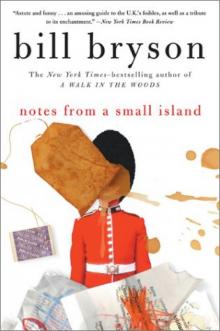 Notes from a Small Island
Notes from a Small Island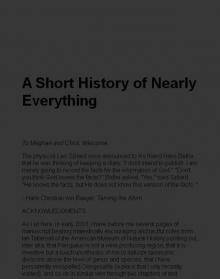 A Short History of Nearly Everything
A Short History of Nearly Everything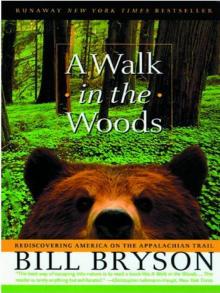 A Walk in the Woods
A Walk in the Woods I'm a Stranger Here Myself
I'm a Stranger Here Myself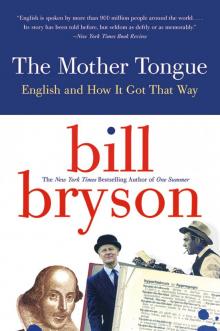 The Mother Tongue
The Mother Tongue Shakespeare
Shakespeare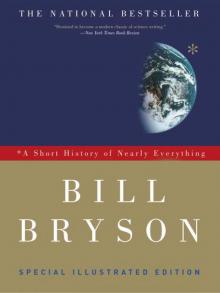 A Short History of Nearly Everything: Special Illustrated Edition
A Short History of Nearly Everything: Special Illustrated Edition The Best American Travel Writing 2016
The Best American Travel Writing 2016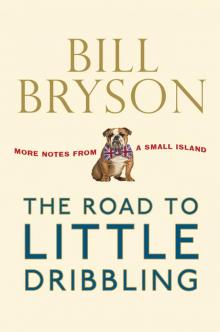 The Road to Little Dribbling
The Road to Little Dribbling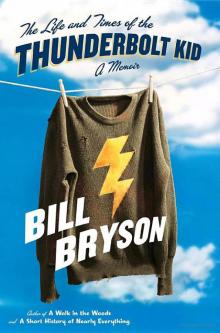 The Life And Times Of The Thunderbolt Kid: A Memoir (v5.0)
The Life And Times Of The Thunderbolt Kid: A Memoir (v5.0) Made In America
Made In America Seeing Further
Seeing Further Shakespeare: The World as Stage
Shakespeare: The World as Stage The Life and Times of the Thunderbolt Kid
The Life and Times of the Thunderbolt Kid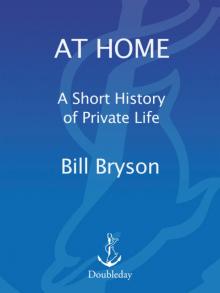 At Home
At Home Bryson's Dictionary For Writers And Editors (v5.0)
Bryson's Dictionary For Writers And Editors (v5.0) Neither Here Nor There
Neither Here Nor There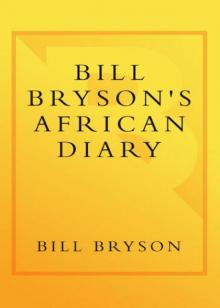 Bill Bryson's African Diary
Bill Bryson's African Diary